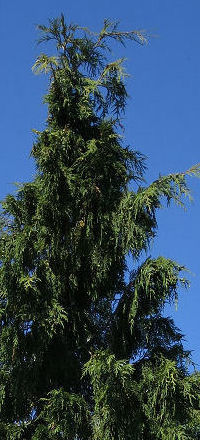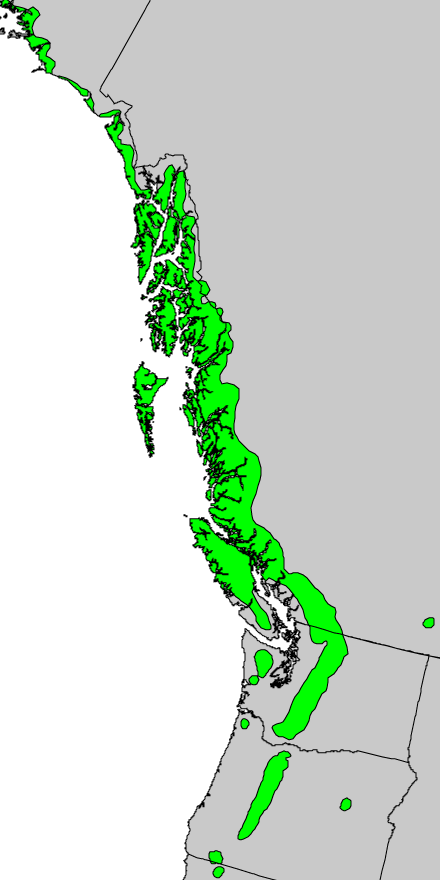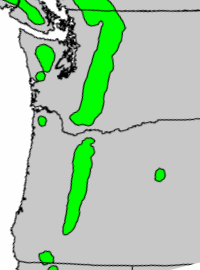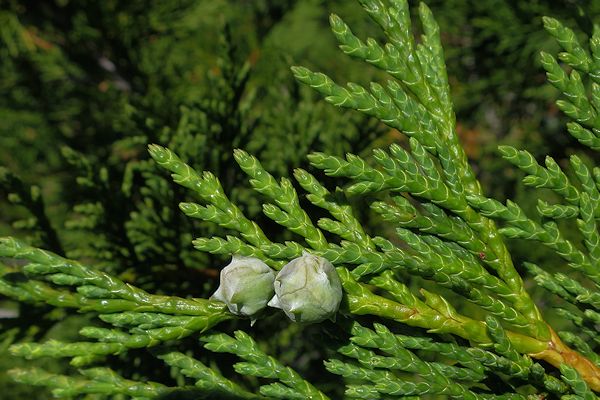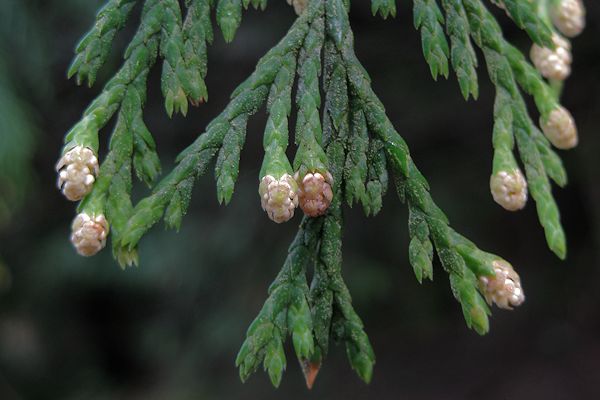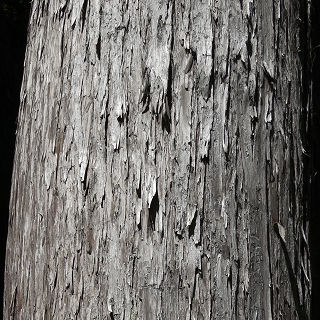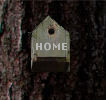 |
Northwest Conifers |
AboutAll ConifersConifersLow-elevationHigh-elevationOthersEast SideSouthwestNon-natives——————Conifer ConesIndexMore Info |
Alaska Cedar – Callitropsis
nootkatensis
|
|
Alaska Cedar at Whetstone Mt. |
Alaska cedar is an attractive narrow tree that grows to 160 feet (50 meters). It is easily recognized by its drooping branchlets. Leaves: Alaska cedar leaves are scaled with pointed tips that can be prickly. The scales have no white pattern below. Unlike other native cedars, Alaska cedar has distinctive drooping branchlets. Cones: The small round cones are distinctive for conifers of the Cascades, although they are similar to those of Port Orford cedar, which grows along the south coast of Oregon. Bark: The bark looks similar to western red cedar, but tends to be more gray, and the stringy strips are wider and often detached, giving it a scruffy look. Where it grows: Alaska cedar grows in the upper elevations of the Cascades and Olympic Mountains. Of course, you can find it throughout Southeast Alaska, where it grows down to sea level. Alaska cedar at Hoyt Arboretum. Uses: The wood of Alaska cedar is strong and resists rotting. The color is light yellow and turns brighter yellow when wet. The wood has a waxy texture and a distinctive resinous smell. Although not widely used locally, the natives of Canada's west coast and Southeast Alaska made canoe paddles, bows, and many other tools and implements from Alaska cedar. Today it is used to make furniture and window frames. You can find beautiful carvings of Alaska cedar in gift shops in Southeast Alaska. Its weeping form makes it popular for ornamental plantings. Names: Formerly Chamaecyparis nootkatensis. The classification of this conifer has been the subject of much recent discussion and indecision among botanists. Other proposed genus names include Xanthocyparis, Cupressus and Hesperocyparis. The species name, nootkatensis, is derived from the name of the Nootka people of Vancouver Island. Other common names: yellow cedar, Nootka cypress, yellow cypress, and Alaska cypress. Note that Alaska cedar is not a true cedar. That is, its genus is not Cedrus, the genus of the true cedars from the Middle East and Himalayas. Some writers indicate this by writing the name as "Alaska-cedar." |
Cones Pollen cones
|
© 2011 Ken Denniston

